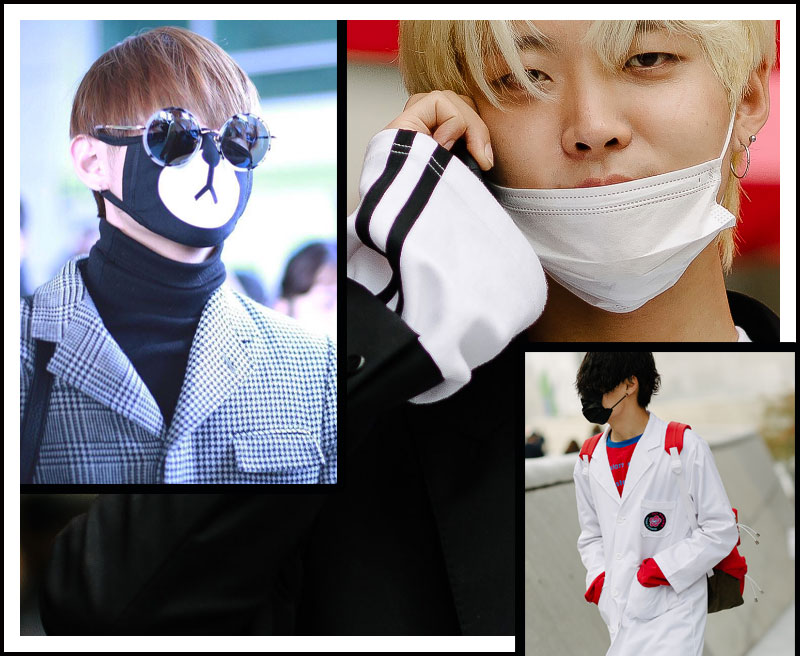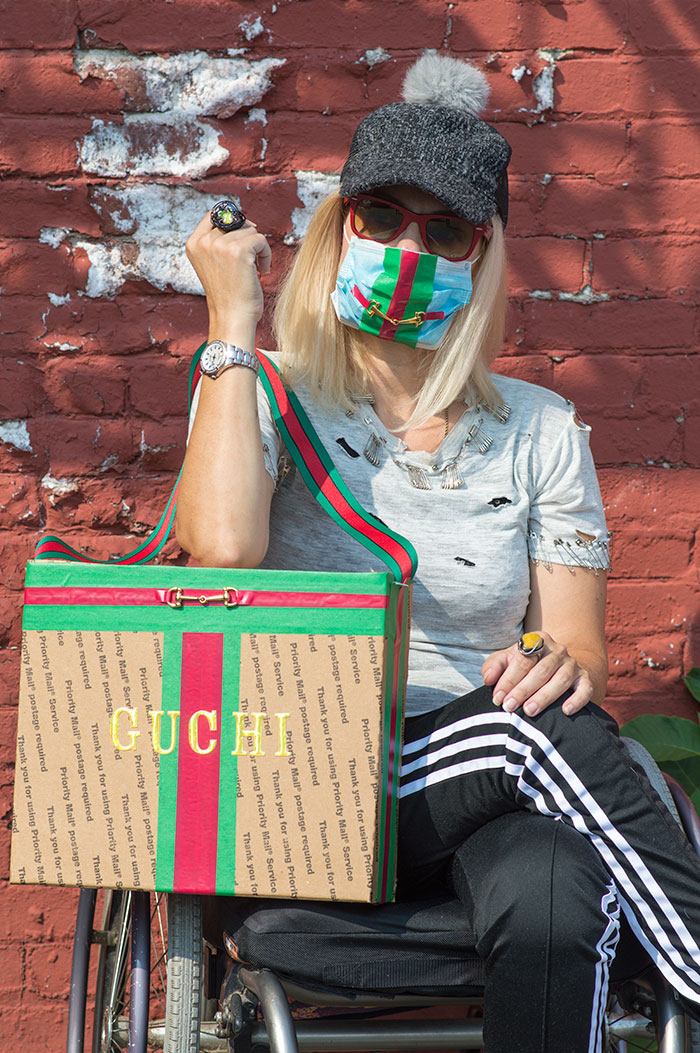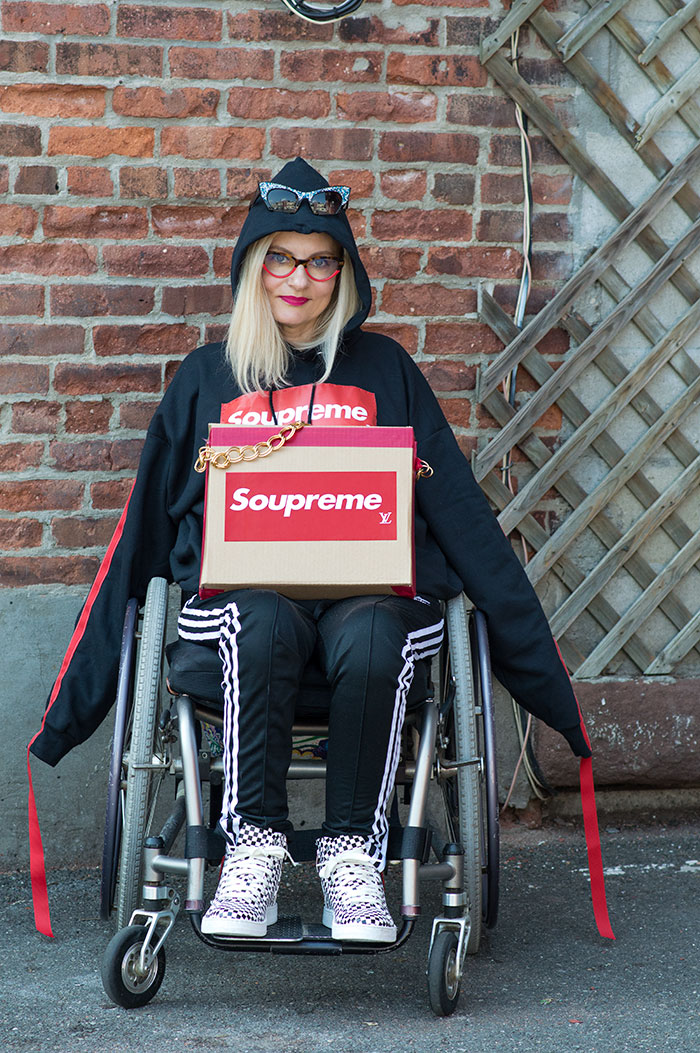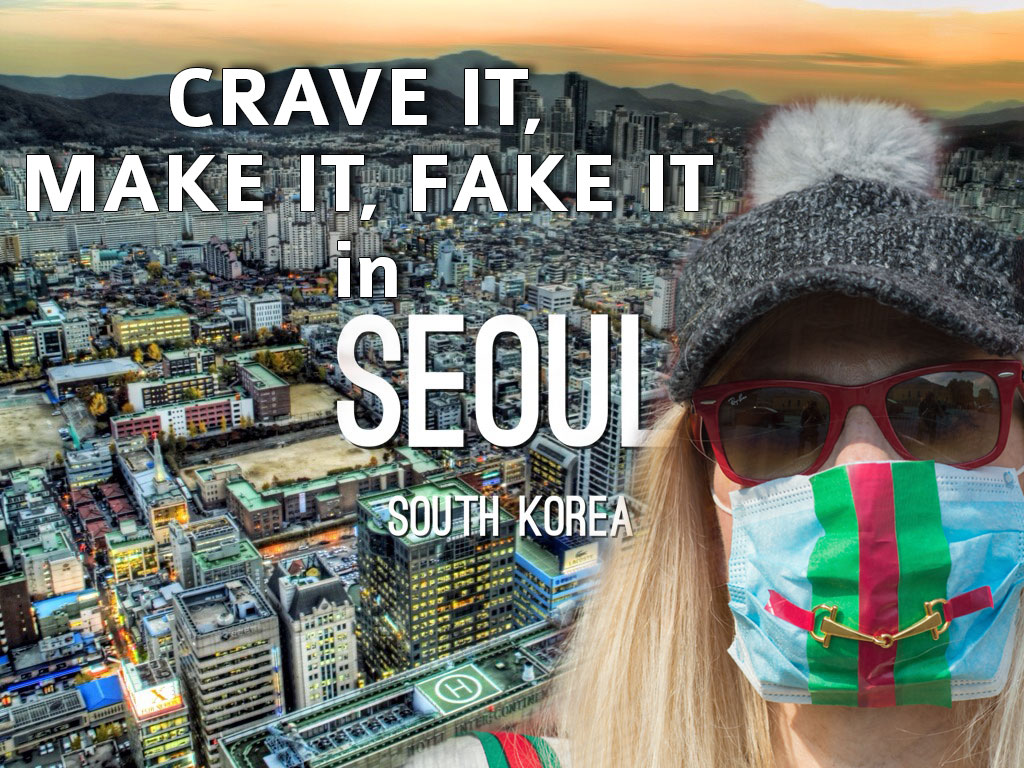My latest fashion obsession is the street style fashion of Seoul, Korea. After reading fashion blogs dedicated to Seoul style featuring fashion obsessed Korean youth, I must say that individual hype beast style is far more interesting than the American counterpart. My curiosity of their keen sense of fashion was further piqued after watching the video “Counterfeit Culture – Seoul: A look inside Korea’s Fake Fashion World” on “Highsnobiety.com”.
The narrator, Alec Leach, editor of online trend publication Highsnobiety.com, explains how an underground subculture of street wear became a uniform for young people all over the world. Particularly in South Korea, the brand obsessed youth culture has seen an explosion of street style. The fashion quotient is so high that Seoul has joined the rarefied ranks of fashion destinations. Street wear is booming but herein lies the twist- the appetite for the latest trend and brand is fed by counterfeit street wear. And this counterfeit industry was born out of necessity and elevated.

Top left: An authentic Supreme X Louis Vuitton collab bag; Bottom left: red sweatshirt by Vetements ($930), green sweatshirt by Balenciaga ($695) and Off-White cotton-jersey trousers ($646). No doubt these authentic items will hit the counterfeit market if they haven’t already.
Korean youth culture avidly follows street style trends popular in the West, however, the brands of the moment are not sold in the country. For example, brands such as Supreme are not available in Korea, and obtaining them from third parties in Japan is cost prohibitive. So a vigorous business in counterfeit goods sprung up to fill the void. Wearing counterfeit brands became as acceptable as wearing the actual brand.
Korea’s culture is homogenous in contrast to multicultural societies in the West. The overwhelming Korean-ness of the population further instills the societal norms of hierarchy, conformity and submission to elders and authority. How does that translate to fashion? Pop culture figures hold massive influence in setting fashion trends. Plastic surgery is pervasive with a singular beauty model to attain. When a trend is introduced, it takes hold and is followed by everyone.
One trend that I absolutely adore and wish Americans would embrace is face masks–the kind you see surgeons wear in the ER. Throughout Asia, these masks are worn to protect from pollution, sand storms and colds. Contrast this to the US workplace, where stressed-out employees have no qualms about going to work with colds, coughing and hacking, spreading bacteria to clueless co-workers.

Dudes in facemasks in Seoul. Left: Singer Kim Taehyung; Right and bottom right images from Vogue.com.
In Seoul, trendy youth have given the mundane face mask a new life and purpose by refashioning it as a fashion accessory.
TADA! I took a crack at customizing my own DIY version of a facemask.

So what do you think of my new look? I decided to take a crack at wearing & creating a DIY customized Gucci facemask w/a matching handbag, made from a United States Priority shipping box. You can make this yourself with some green and red tape, a gold horse’s bit (inspired by Gucci’s iconic gold bit) and red/green grosgrain ribbon as a strap. Does it scream GUCCI or GUCHI? I ran out of an extra “C”, luckily I had an “H.”
Many current street style trends are not affordable in Korea or even America. Brands such as Balenciaga, Thom Browne, Vetements and Off-White are out of reach for the average consumer. Hence, the acceptance and promotion of counterfeit apparel while lending a blind eye towards patent and intellectual property.
Up and coming Korean street style brands echo these Western brands feeding the appetite for trend-right street style. Labels such as Blindness, Juun.J, Ader Error and Kanghyuk are some of the on-the-rise brands garnering attention among the cognoscenti.
A development of the knock-off, counterfeit culture which I have been obsessively following, is DIY customized fake fashion. In fact, the influence of this DIY movement is so widespread, that a CARDBOARD BOX ON A SHOULDER STRAP with “Balenciaga” emblazoned in marker was spotted outside runway shows in Oslo, Norway. Whaaaaaa? Street stylers are creating blatant knock-offs of recognizable brands on clothing and cardboard boxes using markers and crayons! And they pose, snap, style and parade their customized designer art with the same self-assurance as if they were wearing the real McCoy. This is SO HILARIOUS! With everyday implements like pen, paper, glue and boxes, the imitations glorify their sought-after brands while parodying trademarked brand identities. These brand identities are the cornerstones of successful business models and taken seriously by those who grow and cultivate their brands.

Feast your eyes on a DIY fake Balenciaga bag at Oslo Fashion Week. Photo by Eva Al Desnudo via HighSnobiety.com
HERE IS MY DIY TAKE, inspired by one of the most popular, recognizable street style brand, NY’s SUPREME.

NAILED IT! I needed to create my very own SUPREME bag with fake chain. No wait! I would rather have it read SOUPREME with the tagline “Ladling some street style shit!” It’s easy to make. I set the word SOUPREME in Futura Heavy Italic in Photoshop on a “Supreme Red” background and recreated the Louis Vuitton logo on the bottom right. Use red tape which can be purchased from a crafts store and fasten a fake chunky chain to it with red tape. The same can be applied to the SOUPREME laser copy cutout on the sweatshirt. Then using red thread, stitch it onto a size XL sweatshirt. Lastly, use red grosgrain ribbon to sew onto the full length of the arms.

Custom DIY fake takes ON THE STREETS OF SEOUL: Top left: DIY version of the Vetements x Reebok collab; Bottom left: DIY version of Louis Vuitton x Supreme collab; Right: DIY version of a scribble Raf Simons coat. (Raf is currently the chief creative officer at Calvin Klein. Prior to that he was head designer at Dior.) Images by Eva Al Desnudo from HighSnobiety.com.
What drives me insane about high end brand merchandise geared towards millennials and generation Xers is that the majority can’t afford to part with $900 on a big droopy sweatshirt with blatant branding. Brands and their world-wide brand pimping have unwittingly prodded the masses to support the counterfeit markets. There’s a part of me that wants to admonish counterfeiters of intellectual property violations, but then there’s the other side which proclaims, “screw your $900 absurdly priced hoodie! I’d rather spend green on Comme Des Garcons or Sacai!” When I grew up in the 80s, we salivated over brands we couldn’t afford. So we used our imagination to define our unique sartorial style, which in turn inspired designers to interpret our style and then slap on a huge price tag.
My hope for today’s youth is to follow smaller, under-the-radar brands since fashion magazines and media rarely recognize these talents. The biggest designer brands have the resources to advertise while lesser known designers merely get 2 seconds of read-play. Currently, the world of fashion is in flux. Perhaps name brands should embrace how youth culture interprets their designs and produce affordable versions. They could take a lesson from the counterfeiters and supply markets with the real deal. But then again, inaccessibility of these coveted brands has spurred incredible creativity, resourcefulness and ingenuity which further feeds the fashion cycle. This is what makes horses race and makes fashion so exciting!

Ok, get to it. Go make some DIY customized bags and parade them around your coworkers, friends and social media.





